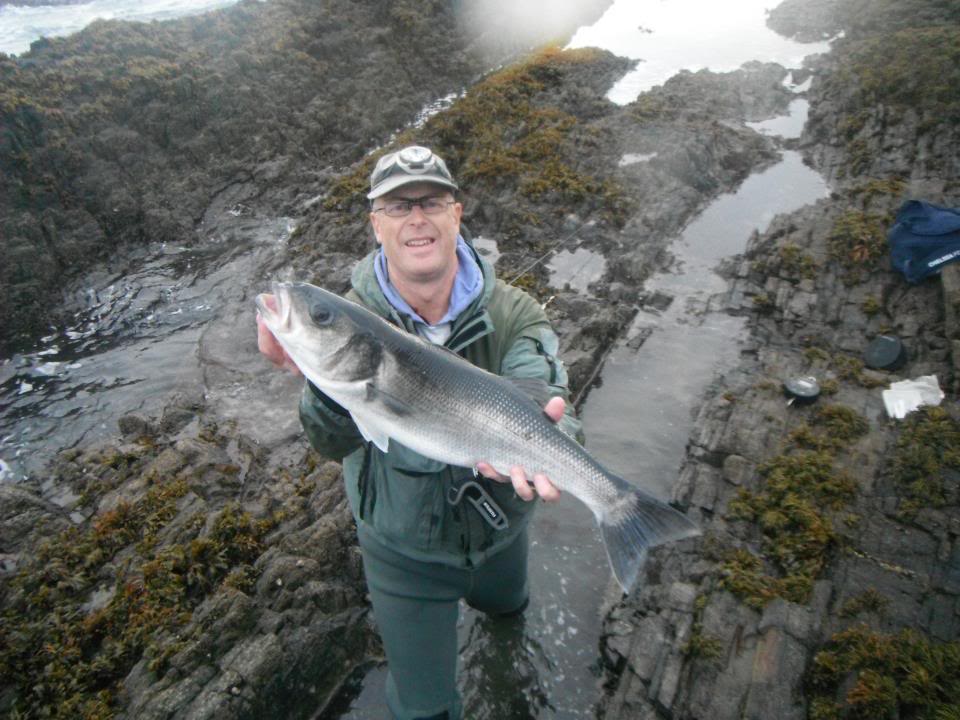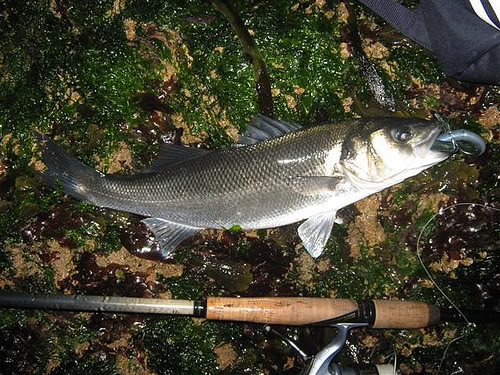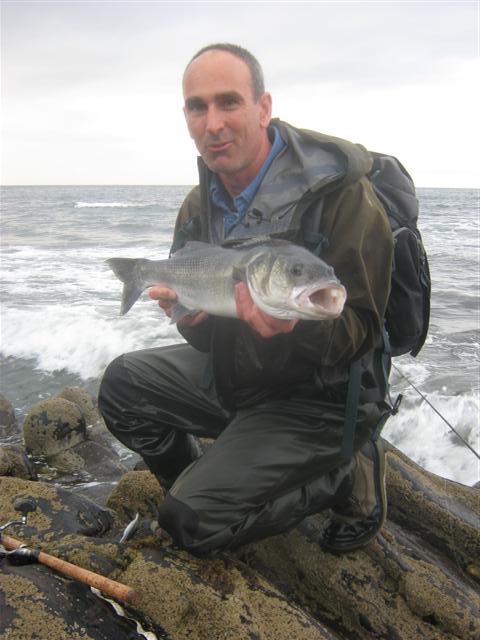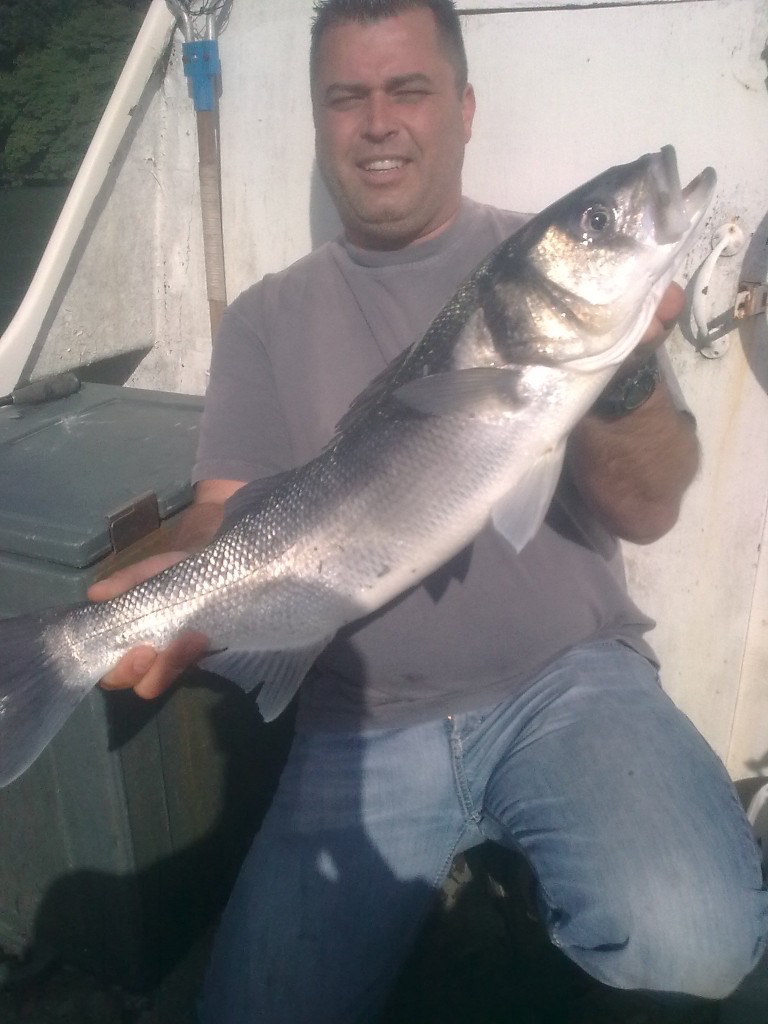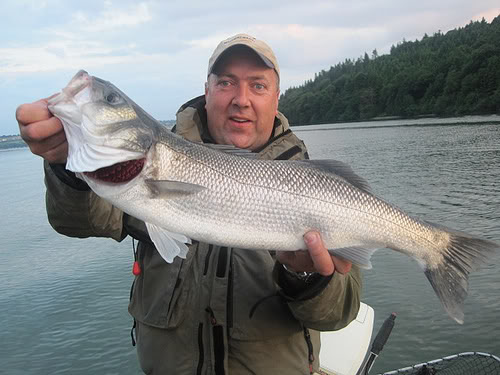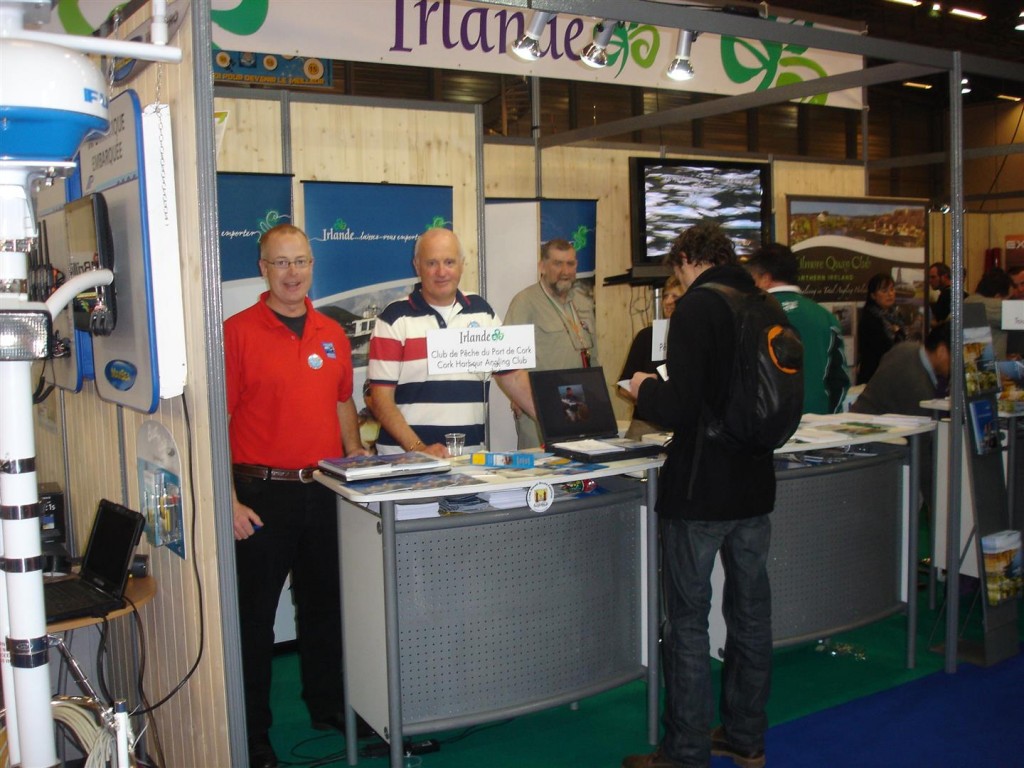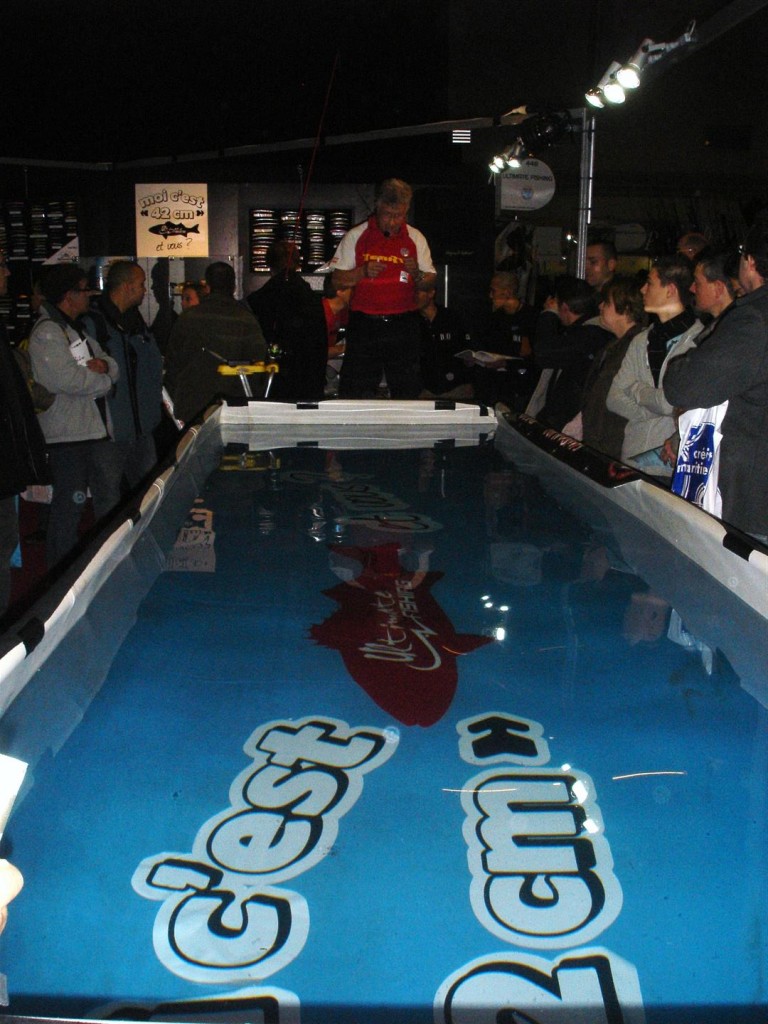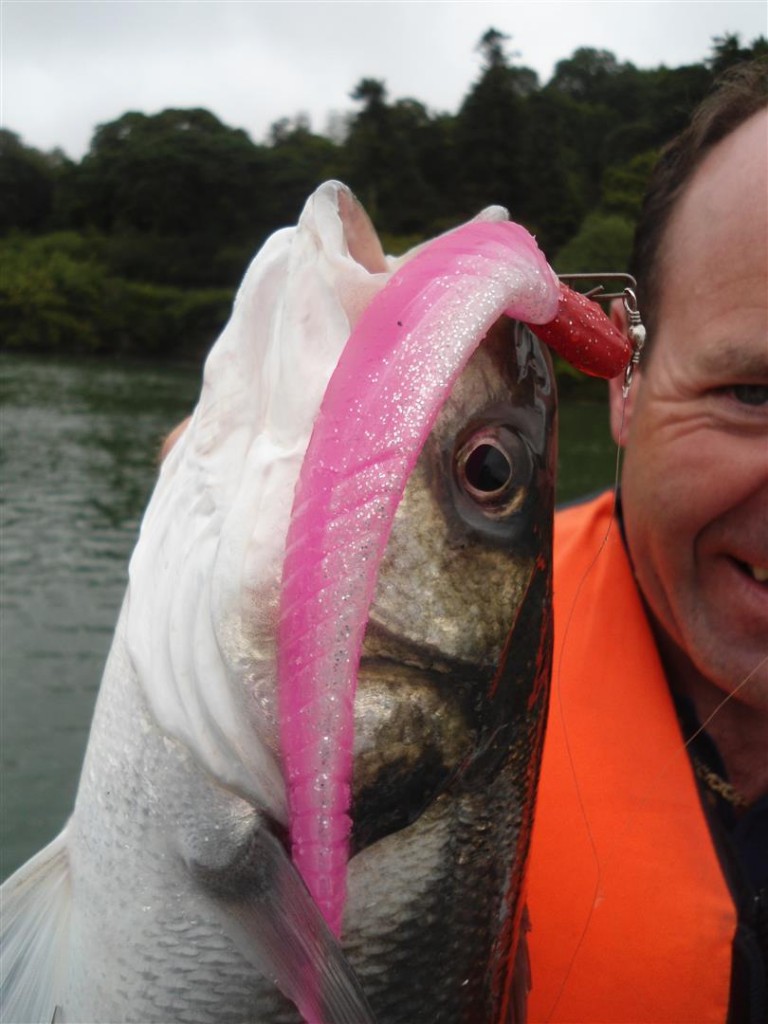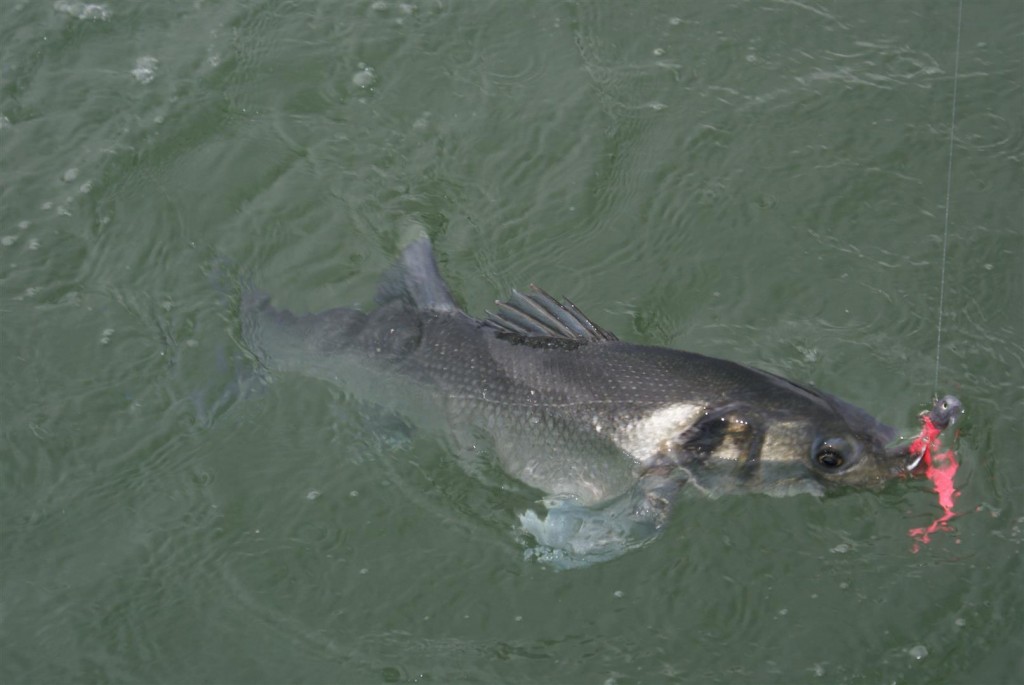You would think that soft plastics have been around for decades - Well they have really! We just were not using them - Pat O’Shea outlines his plastics journey. From a convinced hard lure angler to pioneer in plastics.
(Click on any picture to enlarge)
Many moons ago, in the early days of my lure fishing for bass, a buddy of mine, on holidays in the States, and an avid angler himself, came across a pre-packed collection of assorted soft plastic lures for bass. Knowing my penchant for lures he brought back a pack as a present. I didn’t have the heart to tell him that they were for targeting freshwater bass, both large-mouth and small-mouth. They did intrigue me, however, and, although, completely alien to what I was using at the time, I resolved to give them a go.
The pack was neatly arranged with several compartments containing shads, jellyworms, frogs, and small minnows. There were also compartments with semi-circle hooks, offset hooks, cone heads, sled heads, jig heads, body weights, various stoppers and elastic bands. It was all just so alien!!!
The colours were dramatic aswell, varying from a ‘normal’ dark grey upperbody with lighter belly, to chartruese green, and various other colour combinations with speckled bodies. Wow, what a choice….but how was I going to use them!
Luckily, the pack came with a set of instructions, and one night, with a good set of tides looming, I sat down to digest all I could to see if I could get a handle on this style of fishing. The problem from the oft, as far as I could see, was that the lures would be too light. The enclosed weights were no more than 7 grammes and the body weight of the biggest lures was probably not much more. With what I was using by way of spinning tackle in those days, getting distance was going to be a bit of a struggle. Getting any distance with plugs was a struggle as it was. I used either a salmon spinning rod or a pike rod at the time and, in fairness, they did serve me well but they were light years away from what’s available today. Despite my concerns I resolved to continue with my experimentation.
After getting the set-up of hooks into the lure bodies right or, as near to the instruction sheet as possible, I selected a few of the minnows in different sizes and colours to use. The following night I headed off to give these a go at one of my favourite shore marks.
I remember that evening well. The conditions were perfect. When I arrived at my chosen rocky perch there was just a gentle swell and water conditions were just right with clarity at that optimum level between clear and cloudy. I opted first to try the larger of the minnows in dark grey. I had set it up unweighted with an offset hook. My first cast proved to be a disaster. Having got used to casting plugs I must have over compensated in the cast and, instead, flogged the water in front of me. A few tentative and lighter casts later I got it right, but distance proved to be elusive. It did not end there; the lure looked lifeless on the retrieve. Oh bugger!
I tried several variations of retrieve but none looked right. I switched to a smaller weighted chartreuse minnow. Again I tried various retrieves but couldn’t get it to look any way life-like. It was at that point that another bass angler joined me. Feeling a bit foolish and not wanting to look as if I didn’t know what I was doing I put the soft plastics away to, instead, resume ‘normal tactics.’ When I got home that evening I put the box of US soft plastics away in the garage, effectively retiring it….and there it remains to this day!
That was over 20 years ago and with soft plastics so much in vogue these days I often rue that I was so rash. It was nearly another 15 years before I experimented again with SP’s. Sure I did, on occasion, use and have success with Redgills and Storm Shads, but can you consider these as SP’s in the true sense? It was a number of chance encounters with some travelling UK BASS anglers that put me back in touch with my ‘soft’ side, as it were.
My first encounter was with James & Ted Molyneaux back in 2008. My friend and I had been livebaiting from my boat when we came across the two lads. Both of them were trying the same tactics as us but were struggling for live bait. As we were coming to the end of our stocks and needed to replenish we brought them to a mark that’s normally a banker for mackeral. Sure enough, within minutes all four of us loaded up with what we needed. By way of repayment James insisted that he give us some slug-go’s. I’d seen a bit of coverage about these on the internet forums. They seemed to be the new thing that summer. Fair play to James, he gave us a full tutorial on how to use them, gave us a few off-set hooks and demonstrated how to set them up. Little did I realise that my soft plastic angling career had just kicked off!
During the remainder of that season I got to grips with using the slug-go. I found them to be a bit inanimate despite the great hype of some instructional youtube videos. Nevertheless, I did have some good success and found that a very slow straight retrieve seemed to be most effective. That Autumn I had some good fishing, nothing massive, just small fish but enough success to confirm that I had cracked a new method. I always love discovering new methods and techniques for bass fishing. Its like finding a new mark that works; the taste of success is very sweet!
The following season and a chance encounter with another travelling UK bass angler brought the new learnings to a newer and higher level. I had actually met up with Matt Spence the previous season and we had done a bit of livebaiting together. This time when we met up we elected to do a bit of shore fishing. It was just after the closed season and the previous night I had been at an AC/DC concert in Dublin. I drove straight down to the mark and met a sleepy Matt in the hour before dawn. It was typical June weather being quite warm with broken cloud and a hint of thunder. I was a bit apprehensive for, although, I knew the mark well I had only fished it at high tide. We arrived in the bay, and the particular reef we were to fish, at low tide. Large swaths of kelp beds with gigantic fronds could be seen just below the surface in the pre-light of dawn. Plugging was definitely out of the question. I was definitely out of my depth here, if you pardon the pun, as I had never lure fished at this stage of the tide. The reef extended into a penisula of sorts, Matt took the right hand side, I took the left. Out I launched the slug-go and after a dozen or more casts and a slow retrieve I managed a nice schoolie. That was a relief; the pressure now slightly off. This was followed a short time after by another, all the while checking over my shoulder to see how Matt was getting on. I could see that his tactics were quite different. He seemed to giving his soft plastic lure a lot of movement, and then at times he was at a complete stop, at other times steadily, but slowly, retrieving.
Not long after we were both pushed off by the tide. While regrouping we compared notes and Matt, in fairness, was quite generous in his explanations of this ‘new’ style of fishing. Matt was fishing with a hitch-hiker hook. He was also fishing a heavier sp than the slug-go; one that would more readily sink to the depths. It was also more flexible allowing the angler to impart more movement. Matt explained the varying methods of retrieve. I was blown away. Fishing weightless and weedless opened up endless opportunities. Here, for the first time, I realised were lures and a method for fishing kelp infested low water marks. It was an eye opener. Never again was I to be constrained by terrain, structure, weed, or state of tide. It was a ‘parting of the Red Sea’ moment.
As the tide flooded further we were pushed back to higher fishing perches and Matt connected with a few fish. These were good fish; all of 6 and 7lbs. The benefits of his approach were clearly apparent. From that day forth I tried to learn as much as possible. I researched soft plastics online, bought and tried new variations, learnt as much as I could. In fact, I was on a steep learning curve, my knowledge grew exponentially – that’s quite possibly a reflection of how little I knew. What intrigued me was that different soft plastics needed to be fished in different ways, each had its own nuances. Discovering how they fished best was like a journey in itself. That fascinated me.
Matt’s soft plastic was quite a versatile lure. It could be fished slow with pauses, it could be fished fast, it could even be fished as a surface lure with a ‘walk the dog’ technique. It could be fished weightless and weedless. It didn’t catch a prolific amount of fish but the fish it did catch were always big. Over the following seasons I was to learn this to my delight as the ‘wriggly redeemer,’ as I nicknamed it, was to land me numerous fish over the 70cm mark!
The next season I was to have some more good fortune on my onward quest for knowledge and progression. A local angling guide, Pat Gallagher, secured an agency from Ultimate Tackle from France and started importing all sorts of Japanese and French soft and hard plastics. These were lures only just being talked about on online forums and I had access to them on my doorstep!
I called to Pat and spent a small fortune. His house was almost transformed into a lure tackle haven and I was like a kid in a candy shop. I couldn’t contain my excitement. That day I left with all sorts of goodies; feed shallows, tide minnows, patchinkos, xlayers, motherworms, fatherworms, sakura eels….you name it I got it!
I knew a bit about the xlayers at this stage as they had been a been the topic of plenty of online discussion by then, but it was the motherworms that I was really interested in. I had read a blog post on Mr.FishJersey’s site about rigging motherworms and it struck me that it would be an ideal set up for fishing from my boat. In recent seasons our local waters have become an attraction for French anglers and I had noticed they were all using soft plastics, with cracking results. A particular stretch of our harbour can be prolific for bass but for us this mainly had been to bait. Plugs from the shore had picked up fish but this was occasional. Bass had been picked up by lads trolling from their boats with plugs and redgills but this also had been occasional. The tide in this spot can be ferocious. That didn’t stop the French lads from catching, though, and I reckoned with the motherworm I could match them, although, this was only a hunch at first.
I remember clearly that day I experimented. I had matched the motherworms with a 17g Xorus head. Setting up the boat for a drift just uptide of a small reef I gently lowered the lure over the side. I was fishing in about 35-40ft of water but it seemed like an age before the lure hit the bottom. Once there I was going to follow the style of the French lads by lowering the lure up and down, a style that I discovered later was called ‘vertical jigging.’ However, the minute I hit bottom I lost contact again. In the fast flowing tide I couldn’t seem to keep contact and had to keep feeding line out until I could feel it bumping along the bottom. Confident that at last I had matters under my control I was just about to start my attempt at the ‘French style’ when my rod slammed over. Taken by surprise at first my intitial thoughts were ‘bottom’ until I realised I had a fish on. A nice lively fight ensued and I landed a fine 3lb bass. Success!!! I was delighted. Over the side again with the lure and I tried the exact same thing…bumping the lure along the bottom. Within seconds I had another fish, almost the stamp of the first being the same size. I followed this with a third before I had to go back and set up the drift again. All afternoon this pattern was repeated until after three hours the tide faded and with it the drift. At that stage, though, I was elated. I had caught 33 fish in total, one of the best sessions I’ve had from the boat. I had also, more importantly, cracked a new method!
For the remainder of the season I stuck with this and perfected my ‘style.’ Bouncing along the bottom worked; dragging along the bottom worked; gentle lifting sweeps from the bottom worked. It was almost a revelation. I have some cracking sessions since using these methods and experimenting with all sorts of soft plastics; xlayers, ishads, motherworms, fatherworms, absolute hart worms, gambit shads, Savage Gear sandeels and numerous others. Ever year since I’ve got more experienced at it. I now know the underwater terrain on my local patches like the back of my hand. Losses of gear have lessened and I’ve had some great results with not just quantities of fish but some fine fish in the 70-75cm range. One particular session sticks in my mind when I took my daughter Toni out. We had 10 fish between us but she did have the biggest at over 8lbs and I was delighted. The photo of her with the fish is a great affirmation that this technique….a technique I’ll have to admit I discovered a bit by accident…is very effective.
In 2011, I visited the Nantes Fishing Show. I was lucky enough to be helping out on the Irish stand with Inland Fisheries Ireland and Failte Ireland. Wow, what an eye opener! For the lure angler its almost Nirvana. The selection of hard and soft plastic lures was mind blowing, apart from rods, reels, boats, and other fishing paraphanalia. For me, though, two things increased my learning on soft plastic fishing leaps and bounds. The first was coming across Fiiish Black Minnows. The Black Minnow was launched that year and a few of us were lucky enough to get our hands on a few of them. They were sold out before the show ended! Back home I was dying to use them and had a suspicion that they’d work in the same manner as the motherworms, etc.,… We had got the lures in the pre-mounted packs and they came already set up with a 25g articulated head and hook. The supple body and square paddle tail gave it a unique and tempting action in the water. It looked dynamite…and it was! From the very first moment I used it I had success. On the first drift, on the first outing, as soon as it hit the bottom I had a fish. That season it accounted for scores of fish and was soon vying for the top spot of my most successful soft plastic. It suited the ‘vertical jigging’ style perfectly. It wasn’t long into the season before it accounted for my first specimen of the year. Shortly after the bass season reopened in June I had a beauty of 10lbs 1oz. The fish measured in at 80cm and if caught later on in the year would surely have come in at 11lbs or 12lbs. My ‘love affair’ with the Black Minnow had begun. Since then it has accounted for some super fish, none quite as big but I’ve had a number of 9lbers.
The second learning I took away from Nantes was regarding the use of articulated jig heads. I came across a small stand where the guy manning it was selling what looked like mostly home made gear. He had trays and trays of jig heads. Flattened articulated jig heads caught my eye. As I rummaged through them the owner attempted to engage in conversation. Unfortunately, there was a language barrier; I spoke very very little French and he spoke no English. That didn’t hinder him, though. He was extremely keen to demonstrate the effectiveness of his designs and insisted that I accompany him to the nearby demonstration pool. Here he set up one of his flattened jig heads with a slug-go and promptly cast to the end of the pool. Letting the slug-go to the bottom, he then raised it through the water column before letting it sink. I was blown away by the movement of the slug-go as it came up and then as it fluttered down. I had never seen so much life in a slug-go. I was so impressed that I called angling buddy Jim Clohessy to see the goings on too. Jim was also blown away. We both stocked up with loads of different selections of our new French friend’s stock. I could not wait to try them from the shore.
I didn’t get my chance until July. I had been doing a lot of boat angling up to that point and was also waiting for suitable weather. The mark I had in mind was actually a beach mark. I planned to fish the last of the ebb from a rocky area that splits the beach in two. Towards low water I would be fishing onto sand with the occasional rock. This beach can be great for bait fishing and normally has a good surf running. I needed the surf to drop away. Not asking for much, was I. I got the weather I needed and fished a dropping tide into darkness. For the first two hours I covered a couple of hundred yards around the edge of the now exposed reef, using a selection of plugs and sp’s, but remained fishless. Running out of time as twilight kicked in, an hour from low water, and coming onto the main beach proper I put on the slug-go with the articulated jig head. I waded back out to knee deep water, with the gentle swell coming as far as my waist, and casted out. As the slug-go fluttered to the bottom I felt a bump. Might be a fish, I thought. The line went slack as the lure hit the deck and then I swept it upwards feeling the erratic movement of the slug-go as the flattened jig head resisted my efforts. At the top of the arc my rod doubled over as most definitely that fish took a second shot at it. A great fight ensued with the fish kiting off to my right and then stripping line at a dramatic rate. I was into a good fish. After a great scrap I had the fish under control and guided it into the shallows where I beached it. A fine fish it turned out to be measuring 75cm on the tape and coming in over 9lbs. I returned the fish into the shallows and after a bit of coaxing it swam off. Back to the fishing and would you believe it the very next cast produced another fish. This one went around 2lbs. Two casts later I had another; this one around 7lbs and then it went quiet. I moved along the beach to try and keep in touch with this shoal but lost them. In the growing darkness I decided to call it quits but was elated at cracking yet another method. Since then I’ve often fished beaches, mainly at low water or at the start of the flood. I’ve found that when this coincides with twilight results are at their best. As well as slug-go’s I now use xlayers, mini-xlayers, i-shads, and storm sandeels. With these later four plastics I hardly impart movement at all just gently bouncing them or twitching them while retrieving them at an extremely slow pace.
It’s got to the stage that by last season almost all my shore fishing for bass has been with soft plastics. Many new sp’s have been added to my arsenal which now also includes waveworms, Savage Gear slugs, sawamura shads, Dolive sticks,….the list is endless. I hardly ever use bait anymore and even the time put into plugging has been limited. Even from the boat a lot of my fishing is now with soft plastics. My experience to date has been that soft plastics tend to get more fish and tend to get the bigger fish too! Last year I started using a new soft plastic and after a bit of experimentation discovered what I think is its most effective use. I’ve had great results with this as well. I reckon it accounted for well over a 100 fish over the summer and autumn. In trying to find the best method I hark back to some sound advice I spotted online by Graham Hill. He was referring to plugs at the time and advised the reader to try them out in a deepish pool, think like a fish, and work out the retrieve that imparts the best and most lifelike action. It certainly applies to soft plastic fishing aswell.
This year its been nearly all soft plastics so far. All lure caught fish, bar three, have fallen to sp’s. I’ve literally gone bonkers on soft plastics….and you know it was only while thinking of drafting this article that I remembered about that box of US soft plastics and after all this time, I think, this year I’ll give them a go! Watch this space!
(This feature has also featured in the UK BASS newsletter)

